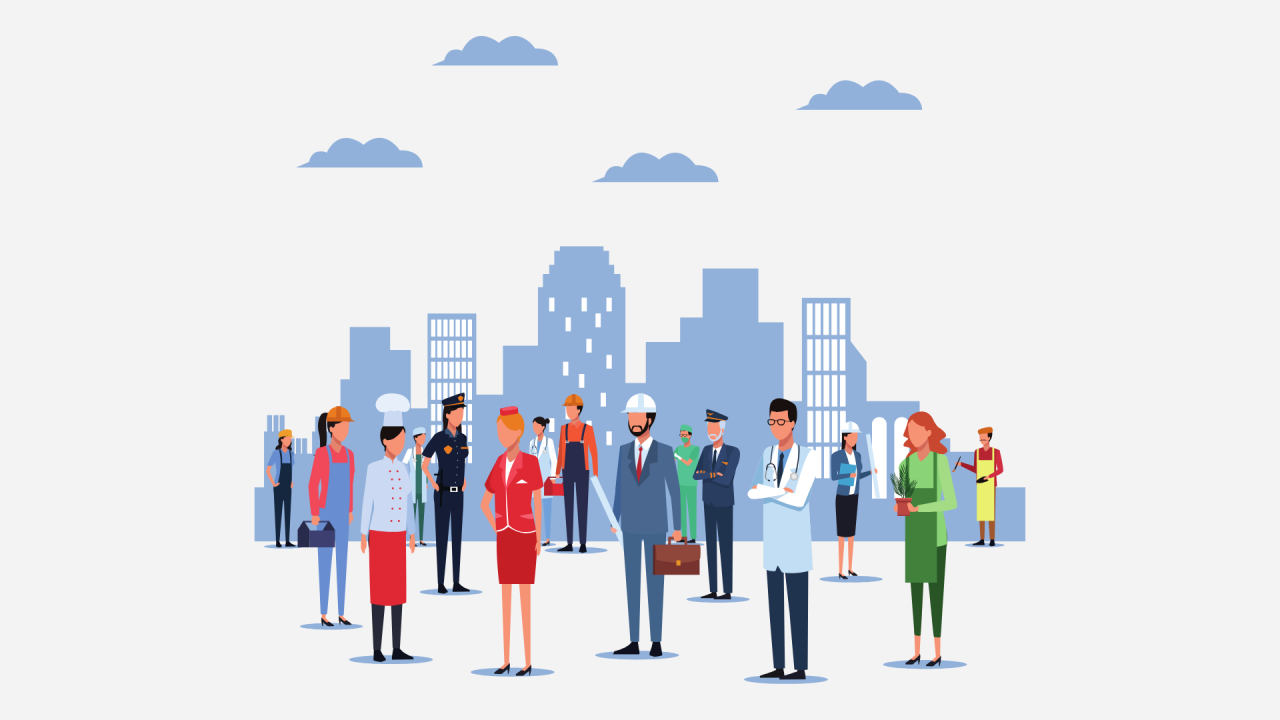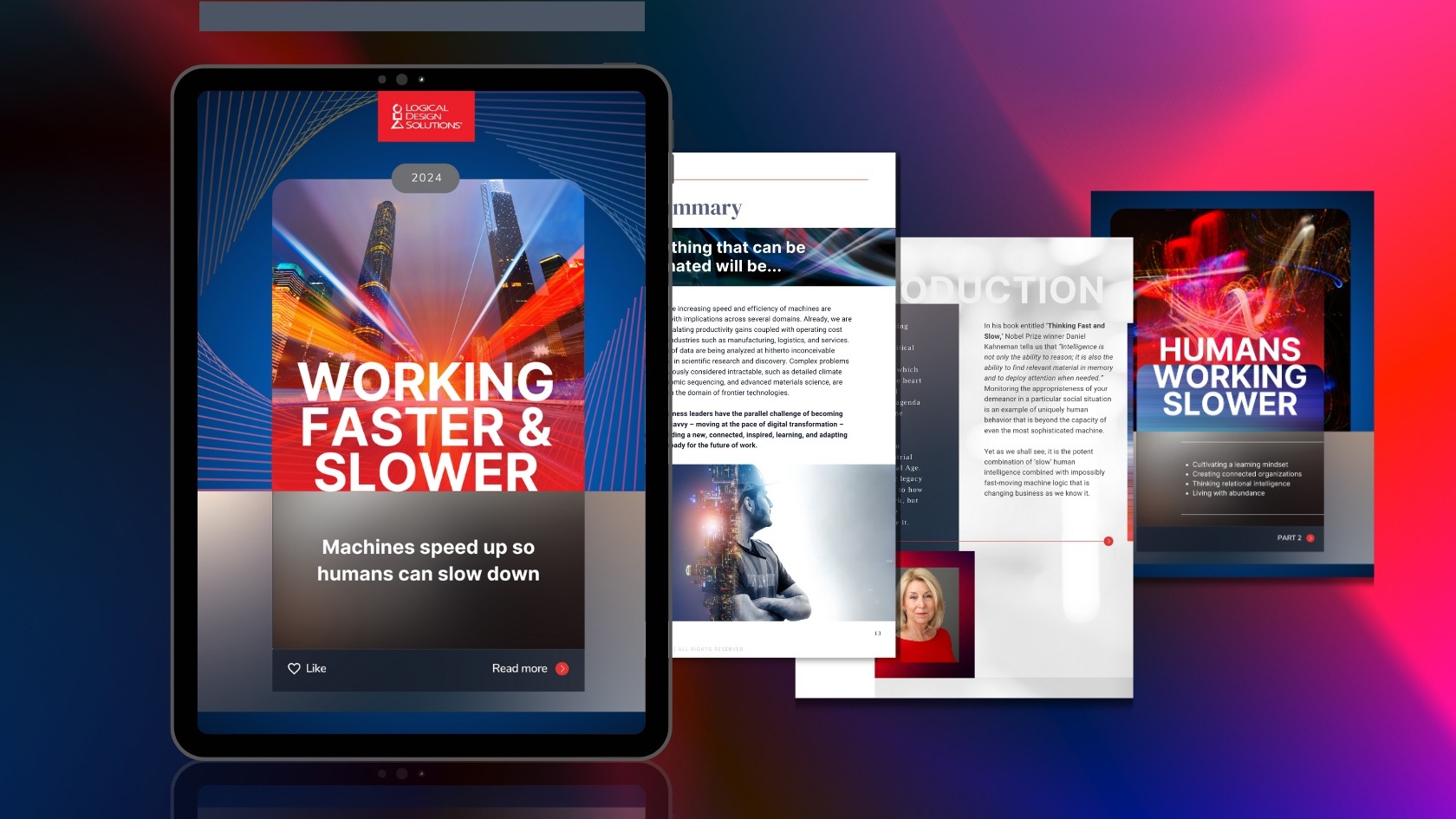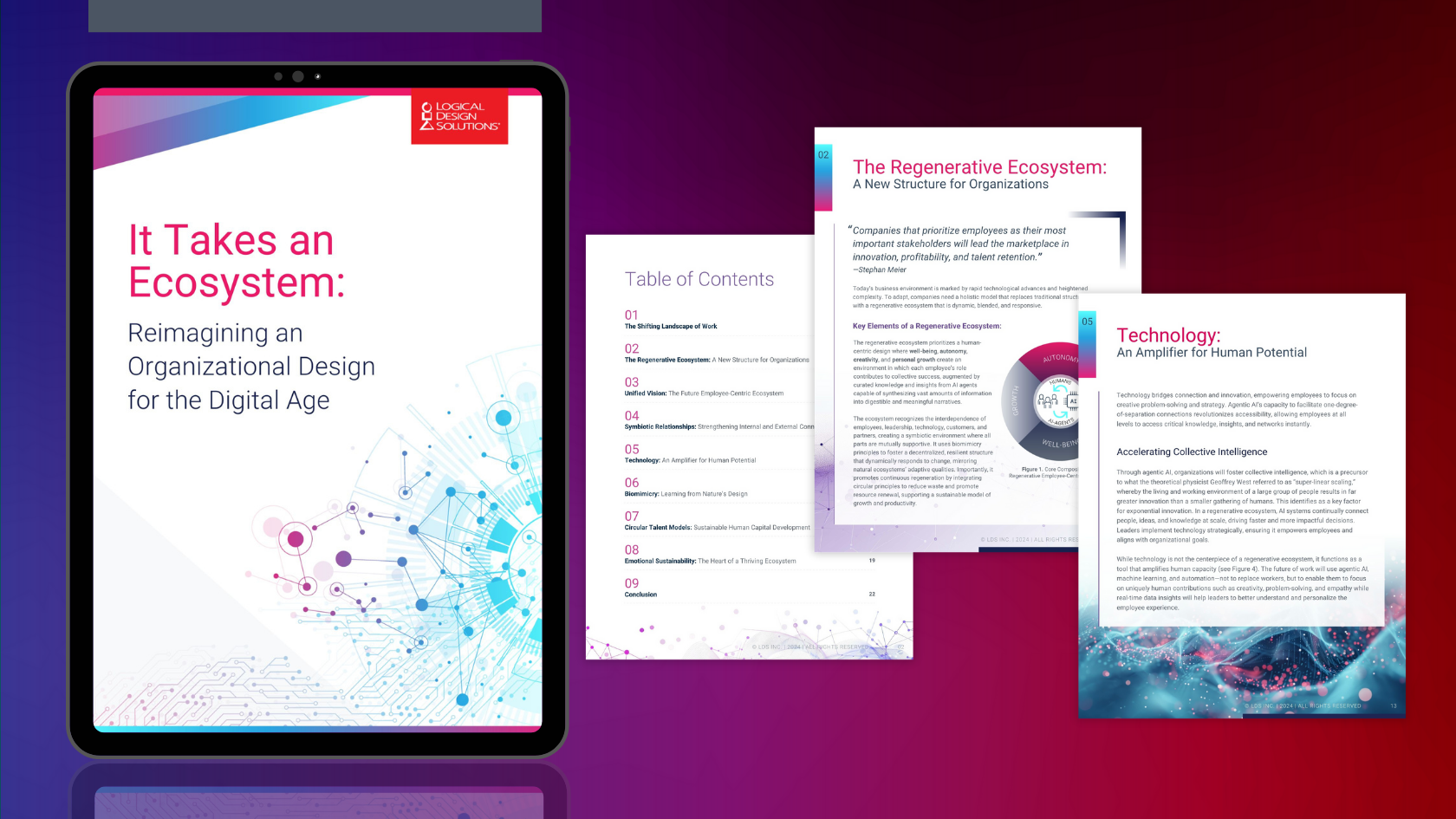4 min read
Part 2. Humans Working Slower
…anything that can’t be automated will be incredibly valuable. Whether we consider AI a tool, a collaborator, or a displacer, it will alter our...
5 min read
Logical Design Solutions
:
7/11/23 4:34 PM
The evolving human-machine relationship – where people and automation coexist through work allocation and design - is a crucial aspect of any digital transformation strategy and must be made an integral part of an organizational redesign.
This entails redesigning organizational processes to embrace innovative work on different timescales, promoting more agility for working on the edges of human-computer interaction, building the motivation and mindsets necessary for essential human-machine collaboration, and nurturing a company-wide culture of meaningful human work and engagement.
We know that today’s organizations can readily acquire and engage top-quality skilled talent from any corner of the world. The pace of change is so rapid that Fourth Industrial Revolution managers are being consistently challenged to create new worth through adaptation and capability. This will be achieved only by utilizing cerebral and emotional skills that were unnecessary during earlier industrial revolutions and using those skills to help workers adapt to the necessary alliance between humans and machines.
As more and more routine jobs become automated and vanish from the workplace, durable skills will come to the forefront of every manager’s wish list. Along with technological know-how, businesses will require workers to display ever greater creativity and emotional intelligence. Workers are expected to shift their focus to skills like critical thinking, creativity, complex problem-solving, and open-mindedness, while machines will solve repetitive and analytical challenges at far greater speeds than is humanly possible.
Managerial learning and adaptation must become constant as AI-driven digital ecosystems gain ever greater footholds in traditional organizations, while digital native managers will be in a prime position to leverage the advantages of the horizontal mindsets and momentum that are an innate part of their organizational fabric.
Apart from those skills we already touched upon, as machines usurp more and more routine tasks, every manager will have to develop a multitude of new human-centric skills, including sense-making, advanced cognition, and the ability to collaborate virtually with subordinates in cross-cultural settings while demonstrating both adaptive and computational thinking.
The most successful businesses are responding quickly to the opportunities presented by advances in AI and ML, and are leading through disruptive innovation. To build this capability, organizations race to find, attract, and retain the best managerial and employee talent. But investing in brilliant new hires isn’t enough; the pace of disruption means that information and skills become obsolete quickly. To foster knowledge as a scalable, sustainable enterprise capability, businesses need to instill knowledge practices through organizational and – as I alluded to earlier – new work design.
Good work design enables new knowledge practices at the individual level, but should also reach beyond individual roles, competencies, and skills to address collective practices that are needed. For example, traditional models assume that the information used by workers in everyday scenarios is structured, static, and based on documented, repeatable skills that are passed on through conventional education pathways and “owned” by experts. Those models are no longer relevant. Today’s managers need to understand that effective learning workers are most adept at challenging assumptions, unlearning what people already know, and creating and sharing new knowledge in new contexts. Individual learning practices fuel the proliferation of insights across distributed networks and help the business move quickly in response to change. Crucially, they instill insights that last, even when individual experts leave the company.
The daily activity of managers that fuses skills, practices, relationships, activities, resources, and technology is architected in work design. It’s here where the performance of people is managed relative to work scenarios. For example, the system that measures, assesses, and rewards the appropriate human judgment that’s applied alongside machine intelligence in decision-making.
Think of it like this. Performance Management coordinates with other horizontal management systems that own enterprise change. Performance must pair with Rewards & Recognition on the human development side allowing managers to establish everyday practices that recognize and celebrate individual and team successes.
Experience also tells us that new performance models shape organizational behavior, and ultimately, culture. Elements of the Performance Management System should seek to influence the desired behaviors of the digital organization, such as divergent thinking, open peer-to-peer feedback, and the pursuit of new perspectives.
Yet skills in isolation are too tactical to develop the momentum that is required for organizational change. Today, long-term operational strategies must address several factors that impact the very nature of jobs and roles: evolving business models, talent needs according to growth objectives, automation in future work, and emerging employment contracts. Tomorrow, those strategies must adapt and incorporate ongoing impacts to jobs as business models mature and new relationships form.
The task of designing new ways of work cannot be reduced to merely finding new people or catching up on new skills. Changes to work, horizontally across organizations, will become a constant condition. Every shift in new business models will usher in shifts in work design, so business leaders and managers must plan accordingly, even iteratively, and ask tough questions about how jobs themselves will change.
Organizational capabilities become foundational to executing business strategy and empowering successful participation in new business ecosystems. They enable the relationships and experiences that put platforms into operation. As change becomes the new norm, there are certain capabilities that managers will need to cultivate now. We foresee a dramatic shift in the workforce as roles, jobs, and partnerships are redefined to meet organizational goals and objectives. Resilience and flexibility will need to reside in the hands of workers while managers provide the necessary tools and capabilities to enable transformation.
Once an organization’s capability to create value in a digital world is understood, it is critical to focus on nurturing a workforce that possesses the ability to adapt quickly, is comfortable with change, is not afraid to take risks, is highly collaborative, and consists of critical, systems-based thinkers. Managers must recognize that these are not your traditional employee profiles, but rather a new breed of workers who will flourish in harmony with machines to realize the desired end state of any transaction.
As workers partner with machines more and more, how people get jobs done cannot be a reactive response. New work has to anticipate a blended human-machine workforce. Employees will be able to choose from an array of different work arrangements that suit them personally – for example, contract work, gigs, and freelance opportunities, and alternative employment will fundamentally change the relationship with managers.
As the 4th Industrial Age gathers momentum, companies are picking and choosing their way through what some see as a digital minefield. When we talk about envisioning the workforce of the future, we need to understand which work will be consumed by humans and which will be handled by machines and then rely on managers to ensure that the workers understand the scope and boundaries of their responsibilities.
We have learned from neuroscientists that uncertainty, volatility, complexity, and ambiguity accompany major changes in organizational ambition. Just as the onset of the Industrial Age saw the resistance of technology-averse Luddites, the 4th Industrial Revolution spawned a new form of challenge to workers that needs to be carefully considered. The goal of any contemporary manager should be to combine the prowess of both humans and machines.
There needs to be a concerted effort to not only design for cultural change, but also a recognition that traditional operational models do not necessarily fit into digital solutions, and a reconsideration of how workers create and disseminate what they have learned. Trust is the essential ingredient to boosting employee engagement, motivation, and openness through transparent privacy, security, accountability, and participatory practices that establish an aura of managerial competency.
I think it’s clear to business leaders that traditional hierarchical organizational structures, with rigorous job descriptions, managerial spans of control, and siloed functions based on specific jurisdictions, are already being replaced by agile organizations in which the company functions as a flattened structure with end-to-end team accountability and flexible resources. This approach will be designed to complement the implementation of standardized processes that facilitate rapid changes.
As work moves towards experience and skills-based job structures, agile practices will demand far greater flexibility and pursue work activities that cannot be constrained by siloed functions. Unlike a functional hierarchy, people management then becomes separated from work management, as workers are assigned to project tasks that embody cross-functional deliverables designated by the flow of work. In this way, reskilling and upskilling become a worker’s prerogative, while agile ways of working, cost containment and rapid outcomes become viable for managers.
Today, regardless of whether an organization has implemented centralized, remote, or hybrid work arrangements, business models need to embrace not only a new normal in terms of work flexibility and remote work, but also worker well-being, technological adaptation, and new social contracts with the workforce, irrespective of where the employee is physically located. Business leaders need a longer-term view aligned to strategic workforce management and, critically, manager capabilities in terms of remote employee engagement and retention of top talent.

4 min read
…anything that can’t be automated will be incredibly valuable. Whether we consider AI a tool, a collaborator, or a displacer, it will alter our...

1 min read
Our latest white paper, Working Faster and Slower: Machines Speed Up So Humans Can Slow Down, offers a deep dive into the transformative power of...

2 min read
Foreword This white paper introduces a framework for a new organizational design—an evolved business ecosystem model that uses AI agents, biomimicry,...